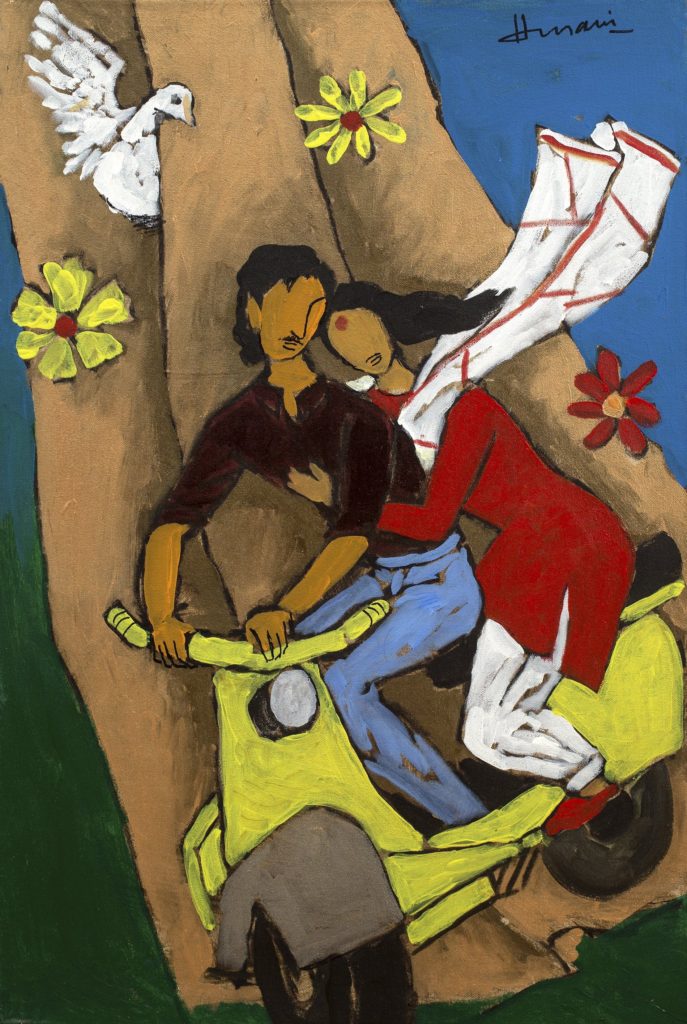M.F. Husain’s vision was deeply entrenched in Indian sensibility from the outset of his career. He incorporated local traditions and juxtaposed diverse folk elements, plying numerous sources to present a wide range of themes in his works. In them, he covered the profound and the mundane, but returned time and again to his cultural roots.
As a conscious artist, Husain looked closely at Indian literature and represented them in his paintings, reconfiguring and recontextualizing them to suit the needs of his time. He borrowed their classical themes and depicted them into his unique visual vocabulary, evolving his art and making it culturally comprehensive in the process.

Premise on the series on lovers, the current work highlights both traditional and contemporary literature featuring well-known characters and beloved stories juxtaposed with modern elements that seem out of place yet pushed the narrative for the artist. Like a still from a movie, a young lover can be seen driving in a Vespa. The man sporting an Errol Flynn mustache is an ode to old Hollywood films that Husain was deeply fond of, and to young love.
In this reinterpretation, the artist used bright jewel-toned colors, even coarse lines, and postures from Indian classical sculptures in depicting the characters. These demotic stylistics, folk elements, and vibrant colors have come to characterize Husain’s signature style.
Attempting to communicate the essence of these stories in simplistic compositions, Husain transformed his protagonists into archetypal figures and depicted them with featureless faces. He stretched their personas and used the immense narrative of the story to convey deeper meaning more than the explicit imagery. By placing them in an abstracted context, they become ambivalent, their purpose extending from straight-forward representation to a more metaphorical suggestion, and thus allowing for pluralistic readings. Ultimately, however, the correct interpretation is of less importance than the characteristic ambiguity of the works.
Auction Catalogue – South Asian Art – ‘Modern and Contemporary’ – March 12 -16, 2020